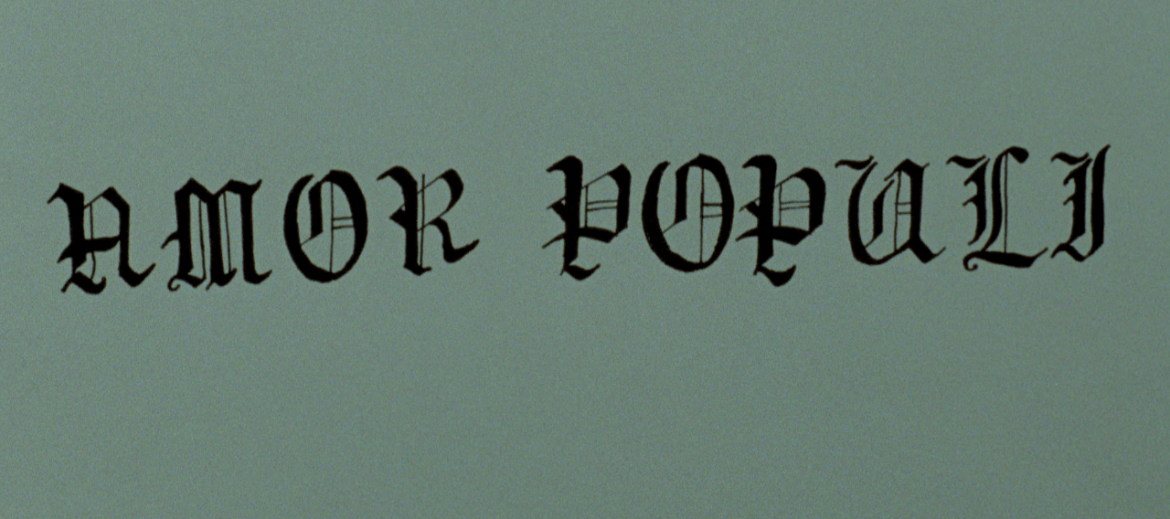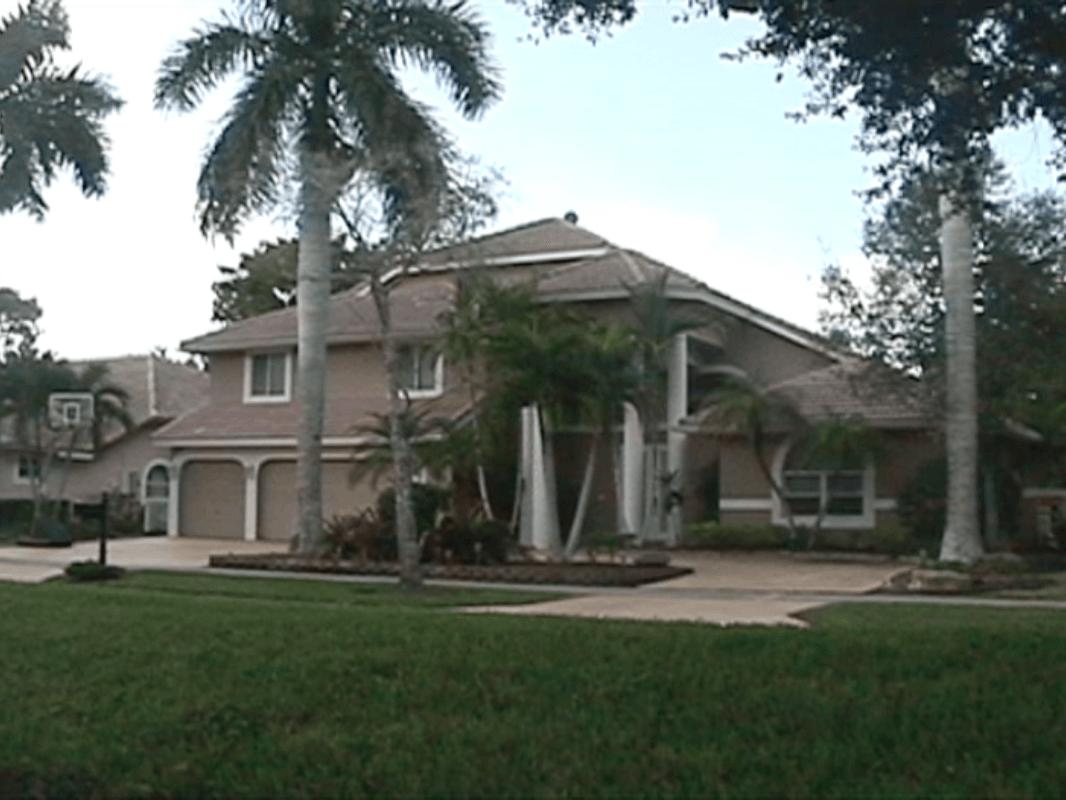Month: November 2014
Chickens’ Journey
Digital Video, 4:3, 4 Minutes, (2007)
At the São Joaquim market in Bahia, 4 chickens are laying on the ground. They are wrapped tightly in newspaper with only their heads sticking out. The gaze of the camera patiently waits to see what will happen to them. When an old woman buys them we follow the chickens on a journey towards their destiny.
Der Geist Des Lebens
8 mm, 16 mm, 4:3, 16 minutes, (2010)
At the bottom of a sea chest in an old house lies a pile of dusty old super-8 reels waiting to tell the story of when the eccentric plutocrate Asger Bøgedahl invited seven artists and scientists from different parts of the world to participate in a symposium, whose aim was to unite science and art in one comprehensive work: a dance describing how the spirit of life was born from the cosmos. A triumph of the spirit, realised in its material form by the best minds within each field of practice.
Sons of Illumination
16 mm, 4:3, 6 minutes, (2010)
One man’s attempt to find solitude in the mountains joins him with unknown brethren.
In this imaginary parable elements from islamic mysticism are appropriated as a narrative unfolds; the formation of a religious movement starting out with one individual and growing into a fraternity with distinct ideas.
Amor Populi
16 mm, cinemascope, 6 minutes, (2011)
A man is running in a landscape of misty wetlands before dawn. Bloodhounds are howling in the distance. He is being chased. In exhausted resignation he falls to the ground and buries something. It is not long before his pursuers encircle him. Reasoning and forgiveness are out of the question. In a desperate plea for his life he sings a song of love.
Set in a distant time and place, this film is an investigation of the nature of violence prior to the “human rights” of Modernity and the ensuing ideas of “individual dignity”. The situation at hand is open: the specta- tor doesn’t know what happened prior to the confrontation.
Is the running man guilty of something? Or is he an innocent who has merely fallen victim to persecution?
Mountain Elegy
16 mm, 16:9, 14 minutes, (2012)
– In a landscape of barren snowy mountains a cave man (played by the artist’s brother) roams around in what appears to be pre-historic time. His primordial world is one of danger and one in which man lives solitary.
– A homeless man (played by the artist’s brother) falls victim to persecution as he is chased out of his village.
– A small film crew (the artist, his father, his brother and a cinematographer) sets camp in a small house on the side of a mountain. We follow the group as they set out to make a film, moving up the mountain through unhospitable winter landscapes.
This work is structured as an anachronic narration consisting of three “story lines”. It is a melancholic meditation on estrangement, non-place, communion and family ties.
The Bedridden Triptych
The Bedridden Triptych – Contentment, Making Something of Oneself, Losing / Three-channel installation / 16 mm and VHS, 4:3, 16:9, cinemascope, 2013, 60 minutes
The state of being bedridden.
What allows for this phenomenon to occur? Indolence, poor health, old age? It can be hard to ascertain with certainty. In a sense one could say that life allows it to occur.
Suppose there is something eerily comical about the life of a person who resigns himself to this fate. Is there some amusement to be had as spectators to the ever churning mind of someone left to his own devices? Could it make us smile? Possibly.
But if we ourselves were to be put in this position, imagine the horror!
Through its references to historical film language constructs, the three films – as a combined whole – create an amalgamation of an existential cul-de-sac.
A dead end that has become the norm for the old, the unlucky and the ill in the industrialized countries of the Western hemisphere. It’s what lies in waiting for us if we live long enough.
From the CPH:DOX catalogue:
A practitioner, a prophet and a poor, tortured soul. Three protagonists, who for more or less articulate reasons have decided to spend their lives in bed, on the margin of the Danish welfare state – isolated from the world, which as the ‘Prophet’ puts it while he is being cared for by the municipality’s home carers, is nothing but a grand illusion.
Deniz Eroglu’s self produced film is structured as a triptych with three parts, which in spite of their large formal differences share a black-humoured , Beckett’esque view of the soaring soul’s troubles with the often extremely tangible prison of the body. Two of the segments are shot on 16 mm, while the more talkative center segment is shot directly on old VHS tapes and presented as one of those documentary ‘alternative world’ programmes that you could catch on TV after midnight in the 1980’s.
A film, whose director obviously spent his formative years in the company of everyone from Kafka, Orson Welles and Ingmar Bergman to ‘vidéo brut’ and conceptual film of the kind he has started to produce himself.
McMansion Man
Digital camera, 4:3, 30 minutes, (2014)
Thomas H aka Dos Equis aka The Dog Wizard is a man of many identities. He leads a free spirited, nomadic lifestyle with his canine entourage Bogey, Moschz and Ginger.
In Florida there is an astounding amount of houses for sale.
This has provided Thomas H with a unique method to secure a roof over his head. Boy does he have some tricks up his sleeve!
He moves into a house as a tenant under the presumed intention of wanting to buy it.
Soon the suit is put away and the djellaba is donned.
But the clock is always ticking: when the owner discovers he isn’t paying rent, measures for his eviction are set into motion.
This doesn’t discourage him in any way however.
With the vast amount of empty houses, this ingenious leader of the pack is always able to find a new domicile.
Towards the Garden of Palms
RED Epic, cinemascope, 70 minutes, (2014)
A wealthy man invites 6 guests to come and spend a week in his countryside estate located in strange foggy wetlands. Keeping a sharp eye on them is a rather ferocious dog and a pedantic butler. In the beginning it is not entirely clear why these people have been invited, or what the purpose of their stay is. Furthermore, to their surprise the house they are lodged in is old and dilapidated. They soon discover that it is expected of them to be the attentive audience as the host appears and presents his thoughts. His ideas are self-enamouring, verbose and melancholic and the whole experience is perceived to be a bit suffocating and pitiable. Why does he want to share all these thoughts? What is it he wants?
Taking literary cue from ensemble plays by Molière and Corneille as well as through cinematic iteirations of similar dynamics, this work is constructed much like “The Rules of the Game” by Jean Renoir and “Satántango” by Bela Tarr, where a group of people embody a movement towards a dramatic climax.
The film work interrelates with text based and photographic works as well as sculptures and found objects.









































































































